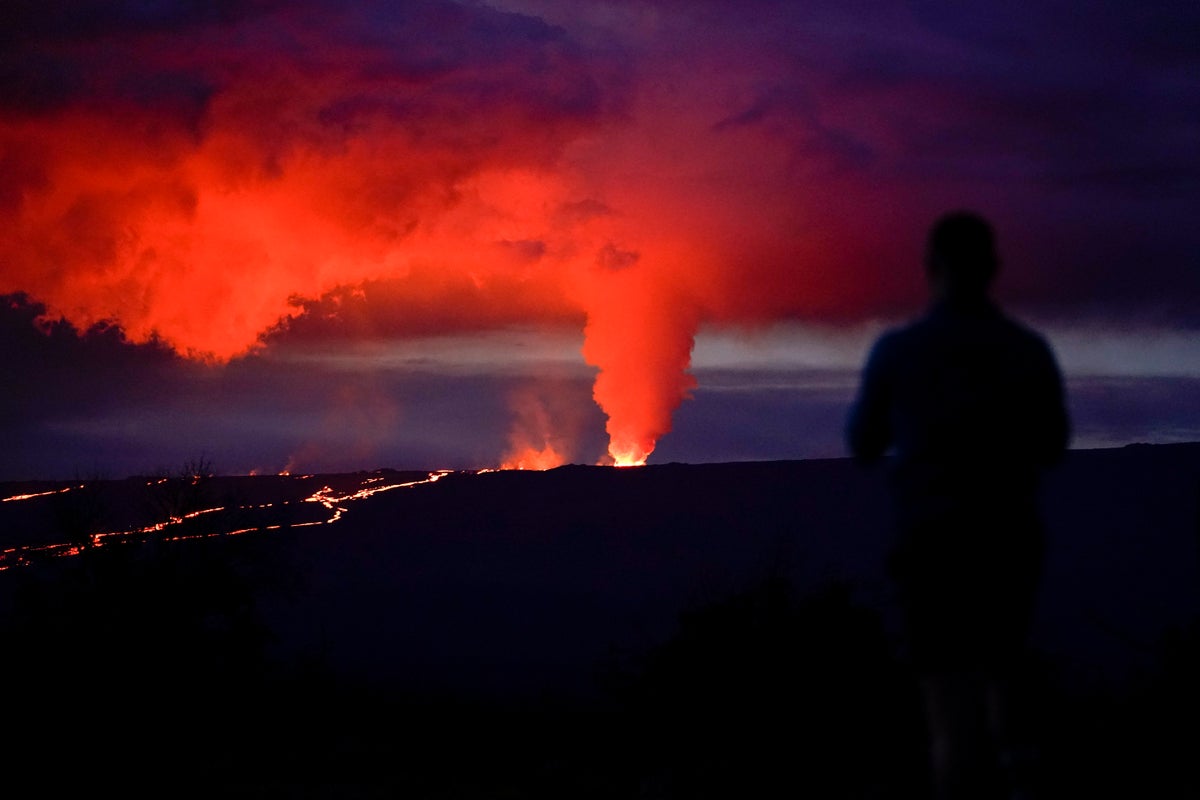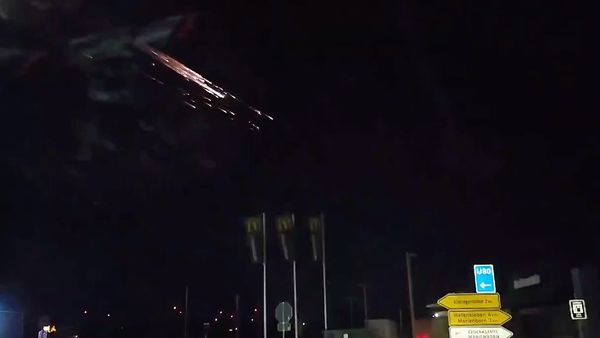
The lava from the world's largest volcano is so hot and bright that the sky has turned orange. At night, throngs of people have been gathering to witness nature's spectacular light show in Hawaii.
Some spectators left an offering of flowers on the black lava that had poured from Mauna Loa in earlier eruptions. Pele, the Hawaiian volcano deity, is revered by many Hawaiians.
Mauna Loa, which last erupted 38 years ago, is one of five volcanoes that together make up the Big Island of Hawaii. A series of earthquakes in November signaled that it was becoming active again, and on Sunday it belched ash and debris into the sky.
Since then, lava has gushed from a fissure, rolled down the slopes in glowing rivers and threatened a key road that connects eastern and western Hawaii. The bright orange lava can be seen for miles. Local residents and visitors have flocked to the Saddle Road highway and to Volcanoes National Park to witness the spectacle.
The road cuts through fields of black lava from earlier eruptions, a reminder that the islands of Hawaii are a string of volcanoes sitting on the Ring of Fire, characterized by active volcanoes and frequent earthquakes.
Lauren Kish, a hospice nurse from the nearby town of Waimea, brought her 7-month-old daughter Mayla to see the eruption at dawn Wednesday.
“She wanted to see Pele,” Kish said. “She wanted to meet her.”
In 2018, Kish saw nearby Kilauea volcano erupt. Both eruptions brought the same feeling of being awestruck by the force of nature.
“You feel like a movement of energy in the whole island and everyone is excited about it,” she said.
Spectators have been taking selfies and group photos, using the dramatic backdrop provided by Mother Nature.
Officials were initially concerned that the lava would head toward the community of South Kona, but instead it migrated to a rift zone which scientists said doesn't threaten communities.
Ken Hon, scientist in charge at the Hawaiian Volcano Observatory, said the lava could reach Saddle Road as early as Friday but that it would likely take longer.







